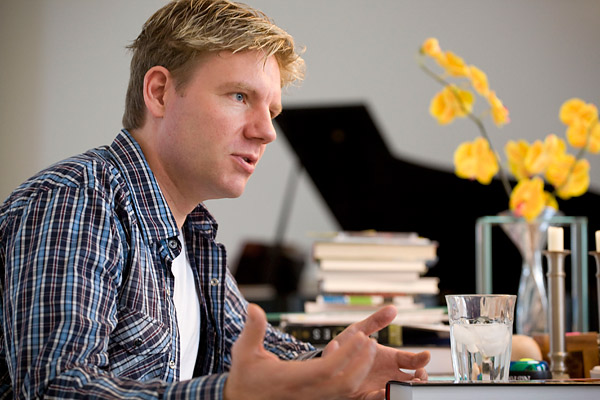Bjorn Lomborg (Photo: Christopher Patrick Grant / AP)
Bjorn Lomborg’s middle name is not actually “controversial,” but maybe it should be. The Danish economist—and TIME 100 selection—gained notoriety for books like The Skeptical Environmentalist and Cool It that called into question the basic green assumptions that the world is getting worse and that climate change is an existential threat to the human race. In recent years he’s put together the Copenhagen Consensus Center (CCC)—a regular gathering where Nobel Prize-winning economists apply cost-benefit analysis to the problems facing humanity, including global warming. The result can be unorthodox—in 2008 the CCC decided that investment in geoengineering was the most cost-effective way to fight climate change, even though we have little to no idea whether geoengineering will actually work. It’s a bit like the Moneyball approach pioneered by Oakland Athletics GM Billy Beane in baseball—figure out how to get the most out of your spending by finding gems in the rough.
Lomborg has legions of critics—Howard Friel wrote an entire book called The Lomborg Deception—but his way of idiosyncratic way of approaching global problems can be useful, if only in challenging conventional wisdom. Now Lomborg is turning to a global threat every bit as dire as climate change: HIV/AIDS. More than 25 million people have died from HIV/AIDS, and more than 30 million people globally are living with the disease. The spread of HIV has shadowed Africa, threatening to hold back an entire continent, while more than $7 billion is spent on the pandemic each year. The success of antiretroviral treatment has changed HIV from an automatic death sentence—at least for those who can afford the drugs—but the virus still casts a long shadow. “We have the sense that we kind of fixed HIV,” says Lomborg. “That might be the case in the developed world, but certainly not in the developing world where there’s still a dramatic number of people getting infected each year. And we’re running low of money.”
More from TIME: Geoengineering: A Clean, Quick Fix?
Indeed. Lomborg notes that UNAIDS reported a 10% drop in funding between 2009 and 2010, while in the U.S., a Republican-dominated Congress would like nothing more than to cut foreign aid to the bone. (Apparently conservatives have already forgotten the legacy of former President George W. Bush, whose work on HIV in Africa remains one of the bright spots of his tenure.) If—Moneyball-style—we’ll know have to do more with less, how should we spend our limited resources to best fight the pandemic? “There’s surprisingly little good information about what really works,” says Lomborg.”That’s what we’re asking.”
Hence ReThinkHIV, the project supported by Lomborg’s CCC and the Rush Foundation, which supports HIV research. After commissioning studies on HIV policy, Lomborg convened a panel of several economists to review the work and answer the question: “if you raised an additional $10 billion over the next five years to combat AIDS in sub-Saharan Africa, how would you spend it?”
More from TIME: Beyond Copenhagen
The results—you can view the summary here—are a bit surprising. Even though years of research have yet to yield a vaccine, the number one recommendation was to invest an additional $100 million a year in vaccine work. That’s due in part to the enormous economic impact a vaccine would have, essentially avoiding the need to take care of future HIV/AIDS cases by eliminating them altogether. “It turns out to be a great investment because it would essentially eradicate HIV,” says Lomborg. “You could plausibly get your money back about 12 times, even though we don’t focus on it much now.”
Other cost-effective solutions include ramping up male infant circumcision—which can lower the rate of transmission for HIV and other sexually transmitted diseases—and preventing mother-to-child transmission. Some of the numbers are startling: the panel believes that spending $7 million could ensure that all blood donations are free of HIV infection, which would avert more than 130,000 HIV cases by 2015. That would yield benefits of more than $450 per $1 spent. And the panel also proposes a 25% increase in alcohol taxes—on the grounds that drinkers are at a much greater risk for HIV infection than teetotalers.
Some of the recommendations will be controversial—the panel downplays scaling up antiretroviral treatment enrollment, in part because they’re skeptical that those are infected will take the drugs regularly.”It’s not where we should be focusing first,” says Lomborg. “We don’t have enough money, the $22 billion we’d need to treat everyone.” Maybe that’s the real lesson here—if we really want to halt HIV, we can’t do it on the cheap.
Video from TIME: Q&A: Bjorn Lomborg
Bryan Walsh is a senior writer at TIME. Find him on Twitter at @bryanrwalsh. You can also continue the discussion on TIME’s Facebook page and on Twitter at @TIME


